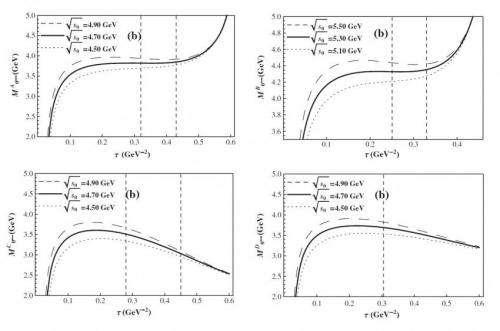December 5, 2014 feature
Long-searched-for glueball could soon be detected

(Phys.org) —While the Higgs boson may be the most famous elusive particle in particle physics, a lesser known particle that has continued to elude even the most powerful high-energy experiments to date is the glueball, named because it consists of two or more gluons. Now in a new paper, physicists have calculated the masses of two probable glueballs and analyzed their possible production and decay modes. Their findings have led them to predict that the long-searched-for glueball may soon be detected, possibly by the Large Hadron Collider (LHC) or one of a handful of other experiments.
The physicists, Cong-Feng Qiao and Liang Tang at the University of Chinese Academy of Sciences in Beijing (Qiao is also with the CAS Center for Excellence in Particle Physics in Beijing), have published their paper on the search for the elusive glueball in a recent issue of Physical Review Letters.
As mentioned above, glueballs are made of elementary particles called gluons, which are one of the gauge bosons that carry the four fundamental forces. Gluons mediate the strong interaction, also called the color force, which binds quarks together so that they can form protons, neutrons, and other particles that make up everyday matter. Although gluons are massless, the hypothetical glueballs that they form are predicted to have mass due to their interactions with each other.
Although experiments have found evidence for gluons since the late 1970s, so far there has been no definite evidence for glueballs despite many years of searching. Part of the challenge is due to a lack of knowledge regarding glueball production and decay. But perhaps an even bigger obstacle arises from the so-called mixing effect between glueballs and hadrons (particles made of quarks) in the normal quark model. Overcoming this problem requires a way to isolate the glueball from conventional hadronic states.
To address this issue, the physicists in the new paper have focused on a class of glueballs called the unconventional glueballs, whose unique properties make them inaccessible by conventional hadronic states and consequently overcome the mixing effect problem. The fact that these unconventional glueballs must be composed of three gluons instead of two has earned them yet another unflattering name: the oddballs.
Here, the physicists used concepts from quantum chromodynamics (QCD), which describes the interactions among gluons and quarks, to investigate the 0¯ ¯ oddball (where the 0¯ ¯ signifies the quantum number).
"The 0¯ ¯ glueballs are tri-gluon oddballs, which are unique and exotic, and do not mix with the conventional hadronic states," Qiao told Phys.org. "And hence, they are relatively easier to be ascertained in experiments as glueballs."
The physicists showed how to establish a connection between QCD calculations and the glueball's properties, which they then used to evaluate the mass spectrum of the 0¯ ¯ oddball. The results reveal the existence of two stable 0¯ ¯ oddballs with theoretical masses of 3.81 GeV and 4.33 GeV, as indicated by stable plateaus on the oddball's mass curve. Unlike previous estimates of glueball masses, those for the 0¯ ¯ oddballs are of particular interest because they do not mix with quark states. However, the scientists note that 0¯ ¯ oddballs can, in principle, mix with certain other states, such as hybrid quark-gluon states.
By reconstructing the 0¯ ¯ oddballs' production and decay processes, the physicists expect that the elusive glueball could potentially be detected by particle physics experiments in China, Japan, Germany, and/or Switzerland in the near future. If glueballs are successfully detected, it would have important implications for understanding the Standard Model of particle physics as well as QCD.
"It would be another triumph of QCD if the glueball is identified in experiment," Tang said. "Don't you think that the discovery of a new physical state, which does not show up in our macroworld, would be interesting? The successful detection of glueball(s) will deepen our insight on the nature of QCD."
In the future, the physicists plan to investigate other types of glueballs. For many of these composite particles, very little is currently known.
"Though we think that 0¯ ¯ glueballs will be relatively easier to be discovered in experiment, due to their unique nature, there is also a list of other glueballs with exotic quantum numbers, most of which are unexplored," Tang said. "It is our aim to explore them in the near future."
More information: Cong-Feng Qiao and Liang Tang. "Finding the 0¯ ¯ Glueball." Physical Review Letters. DOI: 10.1103/PhysRevLett.113.221601
Journal information: Physical Review Letters
© 2014 Phys.org




















